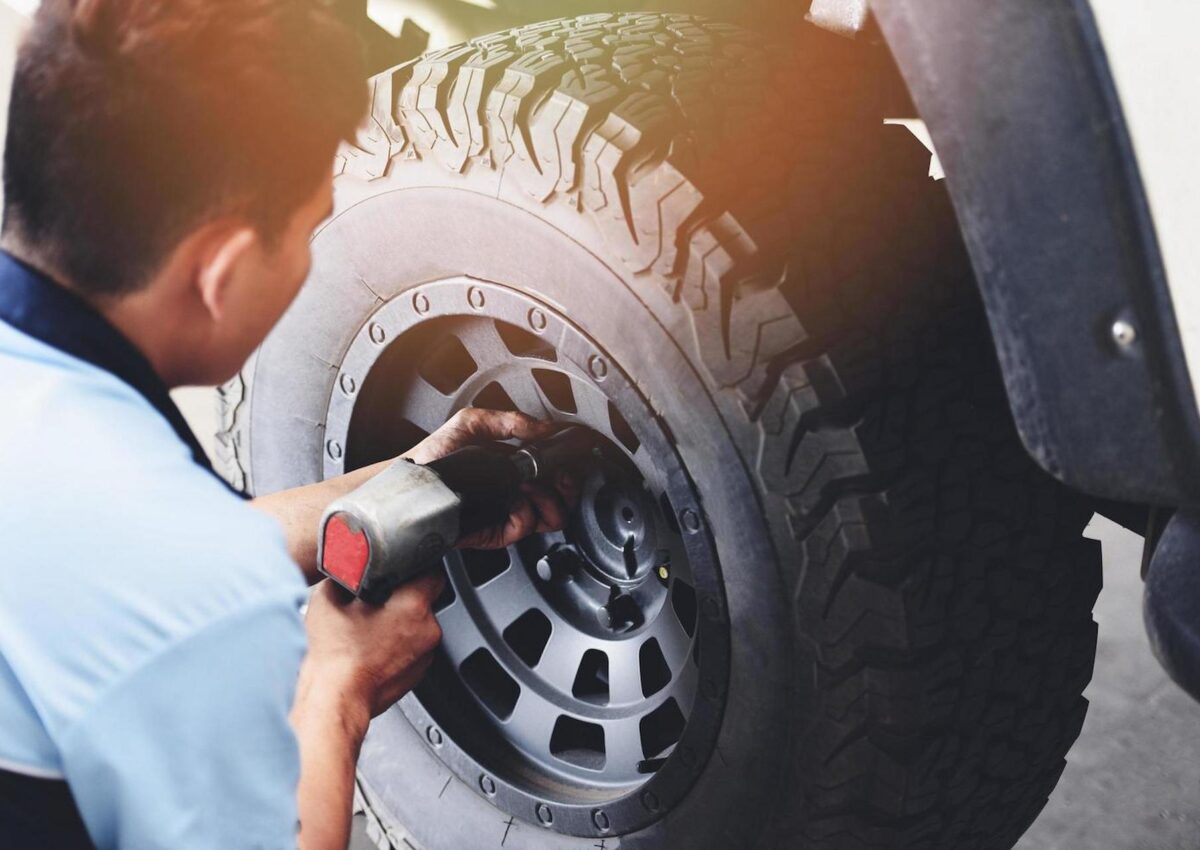
Discover the secrets to prolonged tyre lifespan and enhanced vehicle performance. Unravel the distinctions between tyre alignment and rotation and learn how each plays a pivotal role in optimising your car’s servicing.
In car servicing, ensuring optimal tyre health is paramount. Two critical procedures, tyre alignment and rotation stand out as cornerstones in the quest for prolonged tyre lifespan and peak vehicle performance. While both aim to preserve tyre integrity, they serve distinct purposes, often causing confusion among car owners. This comprehensive guide aims to demystify the differences between tyre alignment and rotation, highlighting their importance in maintaining your car’s health and longevity.
Understanding Tire Alignment
Tire alignment, often called wheel alignment, is the process of adjusting the angles of your vehicle’s wheels to ensure they are perpendicular to the ground and parallel. Misaligned wheels can result in uneven tyre wear, compromised handling, and decreased fuel efficiency. During alignment, technicians adjust the camber, caster, and toe angles to restore proper alignment, promoting even tyre tread wear and optimal vehicle handling.
The Importance of Proper Alignment
Proper alignment enhances safety by improving vehicle stability and steering response, especially during emergency manoeuvres. It also maximises fuel efficiency by reducing rolling resistance, ensuring each tyre maintains optimal contact with the road surface. Neglecting alignment can lead to premature tyre wear, uneven tread patterns, and potential suspension damage, necessitating costly repairs.
Deciphering Tire Rotation
Tyre rotation involves periodically changing the position of each tyre on your vehicle to promote even wear and prolong tyre lifespan. During rotation, tyres are moved from one wheel position to another, typically following specific patterns based on the vehicle’s drivetrain configuration. By redistributing wear patterns, tyre rotation mitigates the effects of uneven road surfaces and driving habits, ensuring balanced wear across all tyres.
Balancing Tire Wear with Rotation
Regular tyre rotation extends the lifespan of your tyres by equalising tread wear, thereby maximising traction and handling characteristics. It also facilitates early detection of potential tyre issues, such as uneven wear patterns or abnormal tread wear, allowing for timely corrective measures. Moreover, proper rotation patterns can optimise tyre performance based on type, vehicle weight distribution, and driving conditions.
Frequency and Timing Considerations
The tyre rotation frequency varies depending on vehicle type, driving habits, and road conditions. As a general rule of thumb, experts recommend rotating tyres every 5,000 to 7,500 miles or during regular maintenance intervals. However, specific recommendations may vary based on manufacturer guidelines and individual driving circumstances. Timely rotation ensures uniform wear and maximises tyre longevity, saving you money on premature replacements.
Alignment vs. Rotation: Complementary Practices
While tyre alignment and rotation serve distinct purposes, they are complementary practices essential for maintaining overall tyre health. Alignment corrects deviations in wheel angles, while rotation ensures even tread wear, collectively optimising tyre performance and longevity. Combining both practices in routine car servicing maximises the benefits of ensuring consistent handling, improved fuel efficiency, and prolonged tyre lifespan. Additionally, If you are a resident of Ruislip, remember to prioritise these practices in car servicing. Car servicing Ruislip ensures that your vehicle is operating at its best, enhancing safety and reducing the risk of unexpected breakdowns on the road.
Professional vs. DIY Approaches
While some car maintenance tasks can be DIY endeavours, tyre alignment and rotation are best for trained professionals with specialised tools and expertise. Professional servicing ensures precise adjustments and adherence to manufacturer specifications, minimising the risk of improper alignment or inadequate rotation. Additionally, professional technicians can identify underlying issues such as worn suspension components or misaligned chassis, further enhancing vehicle safety and performance.
The Bottom Line: Investing in Tire Health
In car servicing, prioritising tyre health through alignment and rotation is a wise investment that pays dividends regarding safety, performance, and cost savings. Regular alignment preserves steering precision and fuel efficiency, while routine rotation promotes even tread wear and extends tyre lifespan. By incorporating these practices into your car maintenance regimen, you enhance driving comfort and safety and minimise the likelihood of costly repairs associated with neglected tyre care.
Conclusion
Tyre alignment and rotation are integral components of comprehensive car servicing, each playing a unique yet synergistic role in optimising tire health and vehicle performance. While alignment ensures proper wheel alignment for enhanced handling and fuel efficiency, rotation mitigates uneven wear patterns to maximise tyre lifespan. By understanding the differences and importance of these practices, car owners can proactively safeguard their investment, enjoying the benefits of prolonged tyre durability and driving satisfaction.




